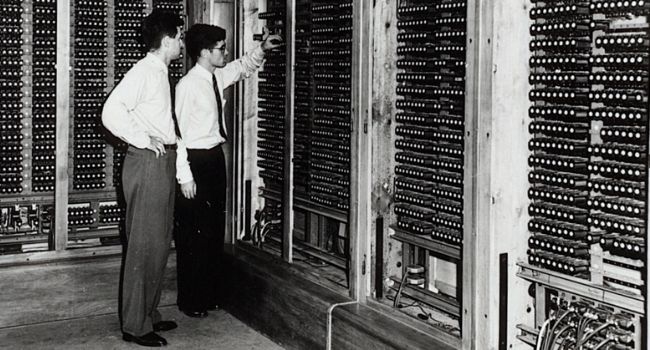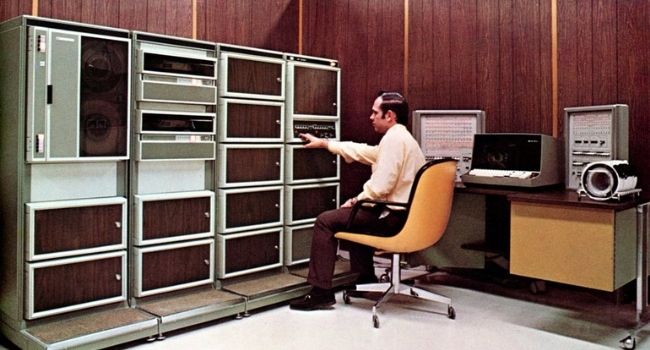August 10, 2021
‘Semiconductors’ seems to be a bit of a buzzword. We know they’re important, we know they’re in appliances and we know they’re in high demand.
But what are they exactly? And, why do cars need them?
OnlineLoans.com.au investigates.
Get the gist in 30 seconds
- A semiconductor is a thing that partially conducts electricity, this can be controlled in many ways
- There are many kinds of semiconductors
- They control so many of things we use every day like an oven’s temperature or phones and other connected devices
- Semiconductors have made devices much smaller, more powerful and cheaper
- That technology has made its way into cars, much to the delight of drivers and passengers
Firstly, what is a semiconductor?
“If you’re reading this on a phone, laptop or other electronic device, you owe semiconductors a ‘thank you’.”
Also known as ‘microchips’, semiconductors are made of materials that partially conduct electricity.
They are commonly made up of silicon crystals, along with other substances.
An electrical conductor, for example copper or other kind of metal, allows electricity to pass through. On the other hand, insulators, like glass, plastic and rubber do not allow electricity to pass through.
The electricity flow in a semiconductor ranges between a conductor and an insulator. The electricity flow can be dialed up or down depending on the requirements.
In other words;
– Conductor: allows the flow of electricity
– Insulator: prevents the flow of electricity
– Semiconductor: everything in between
If you’re reading this on a phone, laptop or other electronic device, you owe semiconductors a ‘thank you’.
What do they look like?
Semiconductors come in a range of different types, below are a few.
![]()
Yep, even LED lights are semiconductors.
![]()
Semiconductors make up many components in electronics.
Why are semiconductors so important?
The electricity flow (conductivity) in semiconductors can be controlled by adding other materials to the silicon used to make them, a process known as ‘doping’. Conductivity can also be manipulated by things like temperature, magnetic field and even light.
It’s this controllability that makes semiconductors so important. It means they can act as tiny switches within electronic components.
An oven is a good example. When you set the temperature, it’s semiconductors that control it.
They prevent it from getting too hot or too cool by controlling electrical flow, acting as a switch, in this case to turn heating elements on and off.
How about washing machines with their preset wash cycles? Yep, it’s semiconductors pulling the switches of pumps and motors.
Semiconductors are found in pretty much all electronic devices from phones to planes to toasters to coffee machines.
They’ve also made things smaller and more affordable.
“In 1975, an IBM 5100 Portable Computer sold for US$8,975 – around $62,000 Australian dollars today.”
Have you ever seen one of those computers from the 1950s or ‘60s? Those massive machines that took up whole rooms, requiring teams of scientists to operate them? Now, something much more powerful (and far cheaper) fits into your pocket in the form of a phone.
 (A computer from the 1950s. Source: ethz.com)
(A computer from the 1950s. Source: ethz.com)
In 1972, for example, the HP 3000 computer, designed as a small business computer, sold for US$95,000 – around $842,000 Australian dollars today.
 (The HP 3000 from 1972 was a powerful beast in its day. Source: hpmuseum.net)
(The HP 3000 from 1972 was a powerful beast in its day. Source: hpmuseum.net)
In 1975, an IBM 5100 Portable Computer sold for US$8,975 – around $62,000 Australian dollars today.
We can thank the development of semiconductors for making computers much smaller, lighter, stronger and cheaper.
Factoid: over the last 60 years, processing power has increased one trillion fold. Put another way, a single iPhone could be used to guide 120,000,000 Apollo-era spacecraft to the moon – all at the same time.
Semiconductors in cars
The automotive industry, just like pretty much all industries, is heavily reliant on semiconductors.
Cars are increasingly becoming more and more ‘computerised’, especially Teslas, hybrids and other electric vehicles.
Driving assist features like auto headlights, AEB (Auto-Emergency Braking) and parking sensors all rely on semiconductor technology to tell them when to operate and how to interact with drivers.
Everything from your A/C to your engine needs semiconductors to operate efficiently. EVs too rely on the technology as they need to increase battery life by controlling the car’s systems, making sure they operate efficiently and when needed.
Headlights, radios, alarms, display screens, key fobs all use semiconductors. It’s a long list.
Car safety is also reliant on semiconductors
When a sensor activates an airbag or alerts a driver of oncoming traffic, again we can thank semiconductors. In fact, car safety has progressed exponentially similarly to semiconductor development.
Navigation and connectivity systems also rely on the technology.
Development has made microchips easy to manufacture, robust and affordable. This, in turn, has helped technology progress.
Depending on the type of vehicle, new cars can have up to $3,500 worth of semiconductor technology.
To sum up
There’s no doubt that semiconductor technology has made life much safer and easier than it used to be.
As things progress and the demand increases, semiconductors have become in short supply.
This means that some manufacturers are creating their own firmware rather than relying on third parties.
We’ll see even smaller chips with even more processing power in the future – and, ultimately, even more advanced car technology.
Sign Up to the OnlineLoans.com.au Newsletter
Get offers, contests and promos delivered straight to you inbox
